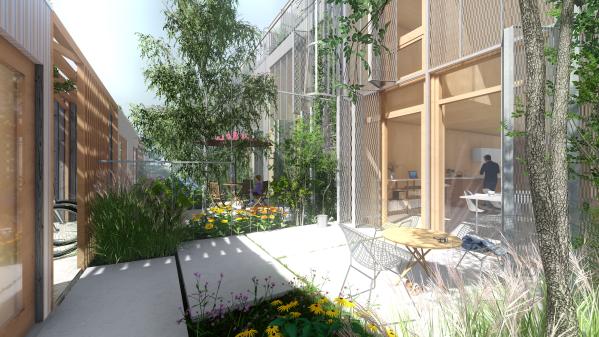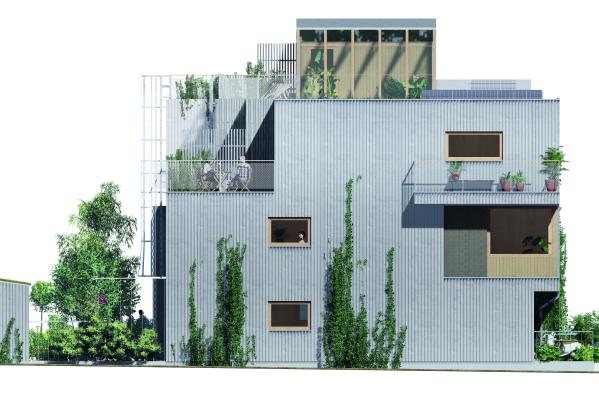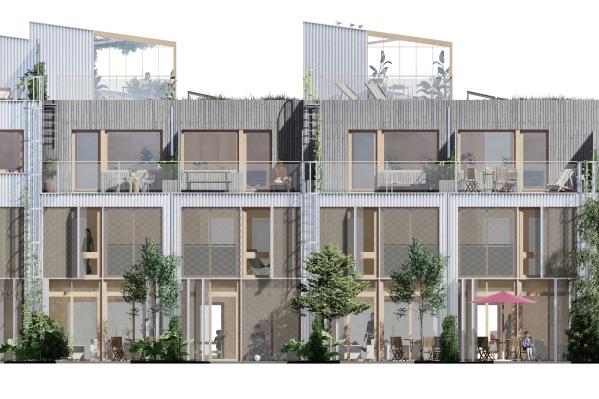Radar
→ Number of employees: 45
→ Founded in: 2003
→ Office: located in Gothenburg and Malmö
radararkitektur.se
@radararkitektur

Briefly describe your office
Radar arkitektur works with architecture in the broadest sense – with buildings, landscapes, urban planning, urban life and planning. Since its start in 2003, we have a broad composition of skills working in cross-disciplinary creative teams. The proximity to employees with different knowledge and different perspectives helps to create a good understanding of the location's conditions and the project's potential. In this way, we contribute greater value to the assignments and ensure that the projects create a richer experience. Radar's ambition is to create contexts where more people feel proud of and thrive in the environments and buildings they encounter in their everyday lives.
How do you usually work as an office?
Radar works interdisciplinary within the office and in close collaboration with clients to create a broad understanding and be faithful to a concept with a focus on implementation. We often engage experts outside the office in order not to miss any perspectives and get more wise input early in the process. The assignments follow a general process model that we have developed with the project idea as a common thread. It begins with us analyzing the conditions and the potential of the location and the task, formulating a concept and testing it to move on with shaping and producing the documents and models needed to communicate the proposal in a good way. In the assignments, it is important to create environments that are generous to their surroundings - to create buildings and environments that support an active urban life. The experience is at the centre, both indoors and outdoors.
With different knowledge and experience, the architect's role can change. By acting as Lund has done with land allocation directly addressed to architects, a positive development is supported
How do you want to work in the future?
We will intensify the work with design-build projects in the future. We believe that it is the best way to accelerate the sustainability work and focus even more on design, while at the same time it is a valuable learning experience for everyone involved and the office as a whole. We are actively looking for new collaboration partners and directions in an interesting context and in municipalities that dare to show their forefoot. The hope is to develop one project per year near the offices in Gothenburg and Malmö. We also see a potential in projects in close cooperation with contractors and developers where we as architects are involved during a larger part of the process. Being involved and sharing the risk is our way of taking responsibility for the development being sustainable without renouncing the design.
How do you see the architect's role in the construction process in Sweden today?
The architect's role varies greatly depending on the relationship with the client and the context in which the project is located. We think it is more important to ask what the architect's office's role looks like and whether it can be developed as a broader support for the actors who develop and build in the future. With that, the architect's role can also change, from a somewhat static role and a limited use of knowledge to a more value-creating and creative role.
How would you like to see the architect's role develop in the future?
The architectural assignment is very multifaceted and varies greatly from the early stages to the construction stage. The knowledge and skills required in the different parts of the planning and building process are far from each other in several respects.
Working with land allocations aimed at architects is a good way to expand the construction sector's contribution to the built environment, while at the same time developing new knowledge and new insights at the architectural offices. We believe in the office as a combination of several different skills, where architects are a central part, but feel good in a more varied context.
With different knowledge and experience, the architect's role can change. By acting as Lund has done with land allocatopns directly addressed to architects, a positive development is supported. That development is welcome to spread in larger parts of Sweden. Anyone prepared to take risks must always gain something - which is an opportunity for architectural offices already today. In order to manage risks, a broader understanding of the whole is required. The comfortable choice is not to take risks, but then you renounce influence and responsibility.
What do you think about the architectural assignment as a business model - does it need to be developed or supplemented?
There are several directions in which the architectural assignment can be developed, to create both a broader and more stable business but also a learning and a thus greater degree of impact. The driving forces for both the profession and the "business" vary but have the commonality of creating something for posterity that is lasting and qualitative.
We are keen to take greater overall responsibility in more projects, which necessarily includes risks but is outweighed by other project results and a different financial result. A way to steer the business from charging by the hour to charging for value.
Is there anything you think the city could do differently to promote better construction processes?
The key to the development of both the industry and the sustainability issues that are becoming increasingly urgent is to reward innovation, quality and design. The municipality of Lund has taken the issue seriously in Brunnshög and started to act correctly and properly in several ways. The land reference with row houses aimed at architects can be seen as a way to contribute to developing a greater understanding at the architectural office of the "reality of construction" and to put pressure on other actors in terms of design and hopefully
sustainability. The processes, from planning to execution, can be developed and improved and several components can be improved. Which components differ from municipality to municipality, but common to several is probably a more structured work around project management, experience follow-up and goal management. We hope that more municipalities follow Lund's example and start creating targeted land allocations with a fixed price for the land so that other aspects become decisive for those involved in developing the environments in the future.
.

